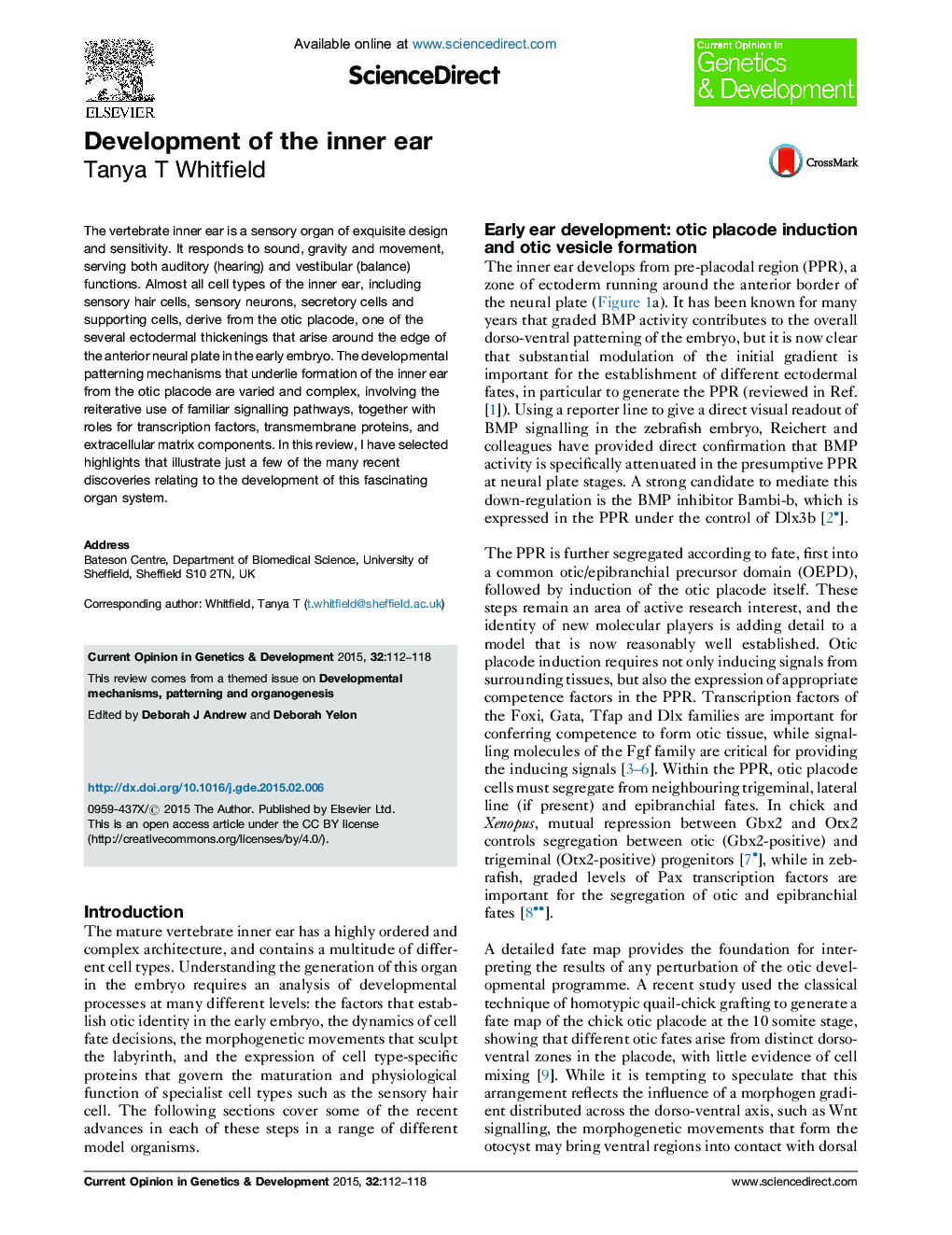| Article ID | Journal | Published Year | Pages | File Type |
|---|---|---|---|---|
| 5893129 | Current Opinion in Genetics & Development | 2015 | 7 Pages |
Abstract
The vertebrate inner ear is a sensory organ of exquisite design and sensitivity. It responds to sound, gravity and movement, serving both auditory (hearing) and vestibular (balance) functions. Almost all cell types of the inner ear, including sensory hair cells, sensory neurons, secretory cells and supporting cells, derive from the otic placode, one of the several ectodermal thickenings that arise around the edge of the anterior neural plate in the early embryo. The developmental patterning mechanisms that underlie formation of the inner ear from the otic placode are varied and complex, involving the reiterative use of familiar signalling pathways, together with roles for transcription factors, transmembrane proteins, and extracellular matrix components. In this review, I have selected highlights that illustrate just a few of the many recent discoveries relating to the development of this fascinating organ system.
Related Topics
Life Sciences
Biochemistry, Genetics and Molecular Biology
Developmental Biology
Authors
Tanya T Whitfield,
